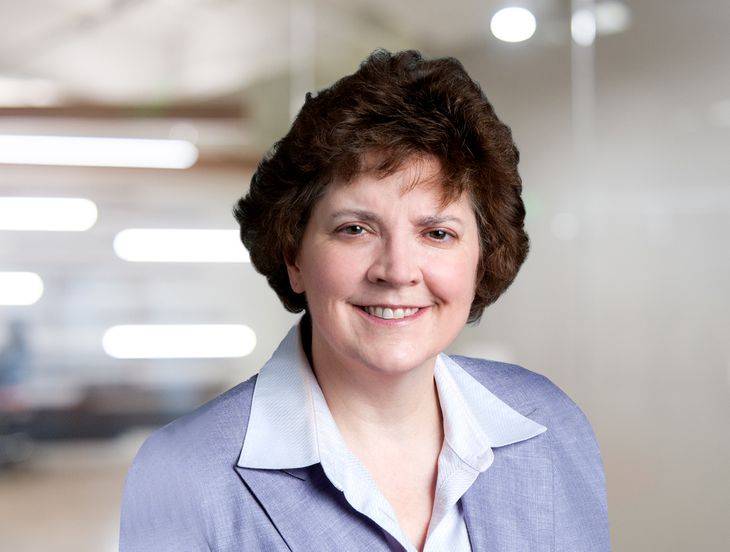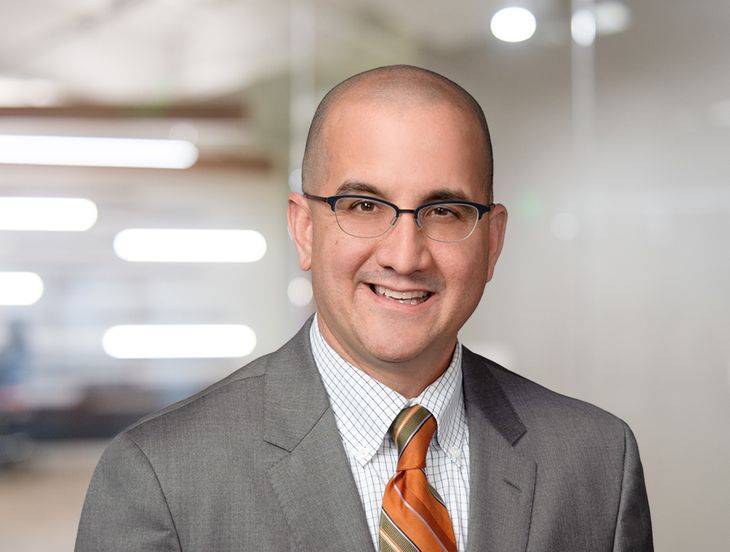Top 10 Things Employers Need To Know About DOL’s New COVID-19 Rules
Insights
4.03.20
The U.S. Department of Labor issued a new rule yesterday to regulate the Families First Coronavirus Relief Act (FFCRA) and the paid leave programs that just became law on April 1, 2020. We’ve digested the 124-page document and picked out the 10 things employers need to know about the new rule. We suggest those unfamiliar with the Emergency Paid Sick Leave (EPSL) and Emergency FMLA (EFMLA) programs read our summary here first, along with our two subsequent alerts (available here and here) summarizing some of the clarifying guidance released by the agency in the past few weeks.
- Shelter-In-Place And Shutdown Orders
One of the most vexing issues for employers has been trying to determine whether an employee is “subject to a Federal, State or local quarantine or isolation order” – the first qualifying reason for leave under the Emergency Paid Sick Leave Act (EPSLA) – if they are covered by a “shelter-in-place” or similar shutdown order issued by a state or local government (something that is becoming increasingly common).
The new DOL rule states that a quarantine or isolation order broadly includes “quarantine, isolation, containment, shelter-in-place, or stay-at-home orders” that cause the employee to be unable to work even though the employer has work for them. The DOL states that this also includes when such orders advise categories of citizens (such as of certain age ranges or of certain medical conditions) to shelter in place or stay at home.
Notably, however, the DOL states than an employee may take Emergency Paid Sick Leave for this reason only if, “but for being subject to the order,” the employee would be able to perform work that is otherwise available. By contrast, an employee subject to a quarantine or isolation order may not take Emergency Paid Sick Leave where the employer does not have work for the employee as a result of the order or other circumstances. This is because the employee would be unable to work even if they were not required to comply with the quarantine or isolation order.
As the DOL explains, the key question in this analysis is “whether the employee would be able to work or telework ‘but for’ being required to comply with a quarantine or isolation order.
The DOL illustrates this point with the example of a coffee shop that closes temporarily or indefinitely due to a downturn in business related to COVID-19. An employee subject to a quarantine or isolation order is not eligible for EPSL because their inability to work is not due to the need to comply with a stay-at-home order, but rather due to the closure of the place of employment. Importantly, the DOL also states that this is true even if the closure of the business is directly related to such an order (the order forced the coffee shop to close) or indirectly related to such an order (the coffee shop closed due to customers being required to stay at home). In both situations, the reason for the employee being unable to work is because the customers or the coffee shop are subject to the order, not because the employee was subject to the order. Therefore, the employee in that situation would not be eligible for Emergency Paid Sick Leave under this qualifying reason.
For many employees currently unable to work because their place of employment has closed – even as the direct or indirect result of a shutdown order – this DOL rule means they will not be eligible for Emergency Paid Sick Leave under this qualifying reason. - How Do You Count To 500 Employees?
The newly issued DOL regulations largely reiterate that a private company or a non-profit entity, in determining whether it is a “covered employer” for purposes of EPSL or EMFLA by employing under 500 employees, should count the number of employees it has at the time the employee would take leave. This is known as the “snapshot approach.” Specifically, employers should count the following:
- all current full and part-time employees it employs in the United States, District of Columbia, or any Territory or possession of the United States without regard to the individual's length of employment;
- all employees on any type of leave;
- employees from a temporary placement agency whom the counting employer jointly employs irrespective of whose payroll the employee appears upon;
- day laborers from a temporary placement agency regardless of whether the employer is the agency or the host company; and
- all common employees of joint employers or integrated employers.
As discussed in prior alerts, whether or not a company is a joint or an integrated employer is a complex factual analysis, which should be analyzed with your attorney.
An employer should not count individuals who provide services who would qualify as independent contractors under the Fair Labor Standards Act (FLSA), or furloughed or laid off workers unless and until they return to work. - Health Care Provider/Emergency Responder Definition
The FFCRA permits an employer to elect to exclude Health Care Providers and Emergency Responders from receiving EPSL and EFMLA. The new rule provides a facially broad definition and explanation identifying which employees may be exempted. Employers must be cautious in interpreting and applying this definition, however, taking into account: (1) the DOL’s more limiting commentary, which is contained in the preamble; and (2) an April 1 letter from Senator Patty Murray and Congresswoman Rosa L. DeLauro to Secretary of Labor Eugene Scalia, challenging the Department’s interpretations of the FFCRA.
Before addressing those caveats, employers should consider the language of the DOL’s Temporary Rule, issued on April 2, 2020, which explains that a “Health Care Provider” is:
Anyone employed at any doctor’s office, hospital, health care center, clinic, postsecondary educational institution offering health care instruction, medical school, local health department or agency, nursing facility, retirement facility, nursing home, home health care provider, any facility that performs laboratory or medical testing, pharmacy, or any similar institution, Employer, or entity. This includes any permanent or temporary institution, facility, location, or site where medical services are provided that are similar to such institutions.
This includes any individual employed by an entity that contracts with any of these institutions described above to provide services or to maintain the operation of the facility where that individual’s services support the operation of the facility. This also includes anyone employed by any entity that provides medical services, produces medical products, or is otherwise involved in the making of COVID-19 related medical equipment, tests, drugs, vaccines, diagnostic vehicles, or treatments. This also includes any individual that the highest official of a State or territory, including the District of Columbia, determines is a health care provider necessary for that State’s or territory’s or the District of Columbia’s response to COVID-19.
This definition applies only for the purpose of determining whether an employer may elect to exclude an employee from taking leave under EPSL or EFMLA. For all other purposes, including identifying health care providers who may advise an employee to self-quarantine for COVID-19 related reasons, the much more limited FMLA definition of health care provider should be used.
An “Emergency Responder” is:
Anyone necessary for the provision of transport, care, healthcare, comfort and nutrition of such patients, or others needed for the response to COVID-19. This includes but is not limited to military or national guard, law enforcement officers, correctional institution personnel, fire fighters, emergency medical services personnel, physicians, nurses, public health personnel, emergency medical technicians, paramedics, emergency management personnel, 911 operators, child welfare workers and service providers, public works personnel, and persons with skills or training in operating specialized equipment or other skills needed to provide aid in a declared emergency, as well as individuals who work for such facilities employing these individuals and whose work is necessary to maintain the operation of the facility. Again, this includes any individual whom the highest official of a State or territory, including the District of Columbia, determines is an emergency responder necessary for that State’s or territory’s or the District of Columbia’s response to COVID-19.
To minimize the spread of COVID-19, the Department of Labor encourages employers to be judicious when using these definitions to exclude health care providers and emergency responders from taking EPSL or EFMLA. If an employer does not elect to exclude an otherwise-eligible health care provider or emergency responder from EPSL or EFMLA, the employer will be eligible to claim the tax credit available under the FFCRA as it would as to any other eligible employee who takes such leave.
Employers should proceed prudently before exempting employees from EPSL or EFMLA benefits. Not only is the entire COVID-19 landscape, including legal requirements, continuing to evolve quickly, but the two concerns mentioned above merit some special consideration.
- In the preamble to the Rule, the Department explains that the term “health care provider” includes individuals capable of providing health care services necessary to combat the COVID-19 public health emergency. This includes workers involved in research, development, and production of equipment, drugs, vaccines and other necessary items. Similarly, the authority to exempt first responders reflects a balance struck by the FFCRA, which seeks to keep employees from having to choose between their paychecks and the individual and public health measures necessary to combat COVID-19. At the same time, the EPSL and EFMLA are not intended to come at the expense of fully staffing necessary functions of society, including emergency responders. Thus, the FFCRA should be interpreted to further the work being done on the front lines to treat and prevent the spread of COVID-19, while simultaneously keeping Americans safe and with access to essential services. While these definitions and comments still appear to permit a wide swath of employees to be exempted from EPSL and EFMLA benefits, employers should recognize that the exemption is not automatic or all-encompassing. Instead, employers’ decisions regarding exemption of some or all employees warrants consideration of the Department’s commentary. And such decisions could be later challenged.
- It is almost impossible to accurately predict whether the letter from Senator Murray and Congresswoman DeLauro will result in further changes to the DOL’s guidance or the law. Both lawmakers clearly contend that the Rule potentially exempts too many employees from the benefits established under the FFCRA. Additional DOL guidance or Congressional action would obviously alter the landscape and employers’ analysis once again. - Intermittent Leave
Employees who seek to take EPSL or EFLMA intermittently must come to an agreement with their employer regarding intermittent leave as well as the increments of time in which the leave may be taken. Without such an agreement, no leave under the FFCRA may be taken intermittently. While best practice is to reduce the agreement to writing, it is not required by rule.
With employees who can telework and with employer agreement, the employee may take intermittent EPSL for any qualifying reason or EFMLA Leave. There is “broad flexibility” for employers and teleworking employees in reaching their agreements as employees who telework do not present a risk of spreading COVID-19 to their fellow employees.
For those worksite employees, employees cannot take intermittent EPSL if the leave is used because the employee (1) is subject to a Federal, State, or local quarantine or isolation order related to COVID-19; (2) has been advised by a health care provider to self-quarantine due to concerns related to COVID-19; (3) is experiencing symptoms of COVID-19 and is taking leave to obtain a medical diagnosis; (4) is caring for an individual who either is subject to a quarantine or isolation order related to COVID-19 or has been advised by a health care provider to self-quarantine due to concerns related to COVID-19; or (5) is experiencing any other substantially similar condition specified by the Secretary of Health and Human Services.
The rationale behind this prohibition is “the employee is, may be, or is reasonably likely to become, sick with COVID-19, or is exposed to someone who is, may be, or is reasonably likely to become, sick with COVID-19.” With the employer’s agreement, a worksite employee "may take up to the entire portion of EPSL or EFMLA Leave intermittently to care for the Employee’s Son or Daughter whose School or Place of Care is closed, or Child Care Provider is unavailable, because of reasons related to COVID-19.”
In calculating leave, only the amount of intermittent leave that the employee took can be counted toward the employee’s total allotment of hours for EPSL and/or EFMLA. “For example,” the rule states, “an Employee who normally works 40 hours in a workweek only takes three hours of leave each work day (for a weekly total of 15 hours) has only taken 15 hours of the Employee’s Paid Sick Leave or 37.5% of a workweek of the Employee’s Expanded Family and Medical Leave.” - Required Documentation
The DOL’s new rule goes beyond its previous question-and-answer guidance and clarifies what records employers may request from employees and are required to keep under the FFCRA. Documentation supporting an employee’s request for EPSL or EFMLA must include an employee’s signed statement with: (1) the employee’s name; (2) the date(s) the employee is requesting leave; (3) the COVID-19 qualifying reason for leave; and (4) a statement that the employee is unable to work or telework because of the COVID-19 qualifying reason.
Depending on the COVID-19 qualifying reason for leave, additional documentation may be required. An employee requesting EPSL due to a federal, state or local quarantine or isolation order related to COVID-19 must provide the name of the government entity that issued the quarantine or isolate order governing that employee. An employee requesting EPSL due to a health care provider advising self-quarantine due to COVID-19 concerns must provide the name of the healthcare provider who advised the self-quarantine. An employee requesting EPSL to care for an individual subject to a quarantine or isolation order, or advised by a health care provider to self-quarantine, must provide either (1) the government entity that issued the quarantine or isolation order the employee is subject to or (2) the name of the health care provider who advised the self-quarantine. An employee requesting to take EPSL or EFMLA to care for a child due to a school or child care closures, or unavailability of child care due to a public health emergency, must provide the following: (1) the name of the child; (2) the name of the school, place of care, or child care provider that closed or became unavailable; and (3) a statement representing that no other suitable person is available to care for the child during the period of the requested leave.
Finally, normal FMLA certification requirements still apply for leave taken for an employee’s own serious health condition related to COVID-19, or to care for the employee’s spouse, son, daughter, or parent with a serious health condition related to COVID-19, under the FMLA. - Regular Rate Of Pay Issues
The “regular rate” under the FFCRA applies typical Fair Labor Standards Act (FLSA) principles, but in a slightly different context – since it amounts to pay for hours not worked. Where an employee is paid an hourly rate or salary, works a fixed schedule, and earns no other pay, then the calculation is fairly simple. Where an employee’s compensation and/or hours vary from workweek to workweek, however, the regular rate requires a calculation each workweek. The Act does not say which workweek should be used. The DOL has says it would not be appropriate to use the workweek in which the employee takes leave.
Instead, the regular rate should be representative of the employee’s regular rate from week to week. This should be calculated using an average weighted by the number of hours worked each workweek. Specifically, the employer must look at each preceding, full workweek that the employee has been employed during the six-month period ending on the date on which the leave is taken.
Put most simply, applying the usual regular rate principles such as how to address tip credit, incentive pay, and other non-hourly compensation, an employer would total the compensation earned across the relevant (full) workweeks and divide it by the total hours worked during the same period. - Effect On FMLA/Other Paid Sick Leave
The new DOL rule confirms the statutory language and previous DOL guidance regarding the interaction of the new leave requirements with existing leave laws or employer policies. With respect to EPSL, the DOL rule confirms that emergency paid sick leave is “in addition to,” and not a substitute for, other sources of leave which the employee has already accrued, was already entitled to, or had already used, before the law became effective on April 1, 2020. However, an employee is not entitled to retroactive reimbursement or financial compensation for any leave taken prior to April 1, 2020, even if such leave was taken for COVID-19 related reasons.
With respect to how EFMLA leave interacts with traditional FMLA leave for FMLA-covered employees, the DOL rule confirms that, rather than create an additional and new 12-week leave entitlement, the EFMLA adds a sixth reason to take the 12-week entitlement under the FMLA (specifically, to care for a son or daughter whose school or place of care is closed or child care provider is unavailable due to COVID-19 related reasons). Therefore, an employee’s ability to take EFMLA leave may depend on their use of traditional FMLA leave during the 12-month FMLA leave year. If an employee has already taken such leave, the employee may not be able to take the full 12 weeks of leave under the EFMLA.
However, employers in states with their own versions of “mini-FMLA” laws should be mindful that the new EFMLA leave will not run concurrently with those state family and medical leave entitlements as those state laws generally do not cover leave related to COVID-19 school or child care closures. This may change in the future as many states are already moving to amend their state family and medical leave laws to include leave for this same purpose. The ultimate question of whether these amended state leave laws will run concurrently with the EFMLA will depend on the final language of these amended state laws. - Smallest Businesses Receive Partial Carveout
A new development announced in the rule provides a partial carveout for the smallest businesses in the country. Employers with fewer than 50 employees will not have to provide EPSL or EFMLA to employees who need to care for their son or daughter whose school or place of care is closed, or child care provider is unavailable, for COVID-19 related reasons, if one of three factors exist:
- doing so would raise expenses and financial obligations above available business revenue such that the employer would cease operating at a minimal capacity;
- the requesting worker’s absence would pose a substantial risk to the employer’s financial health or operations because of their specialized skills, knowledge of the business, or responsibilities; or
- the employer can’t find enough able, willing, available, and qualified workers to perform the work of the employee requesting an absence.
In such cases, the rule notes that employers must document the facts and circumstances that justify the denial and retain those records for its own files (not to be submitted to the DOL). - Enforcement Delayed By A Few Weeks
The agency indicated that it won’t enforce the rule for employers operating in “good faith” until April 18. While employers shouldn’t use this several-week period as an excuse not to diligently understand and comply with the new law, this provision serves as a welcome bit of breathing room as you digest and apply the many new principles involved. - USDOL Acts Outside Of Normal Course
Finally, he agency conceded that it bypassed the normal process to issue this rule, where it would typically issue a proposed rule and receive public comments over a several-month (or year-long) period. Instead, the agency stated that it had “good cause” under federal administrative law to move quickly and decisively in order to release a direct final rule that many American employers were counting on.
Conclusion
Fisher Phillips will continue to monitor the rapidly developing COVID-19 situation and provide updates as appropriate. Make sure you are subscribed to Fisher Phillips’ Alert System to get the most up-to-date information. For further information, contact your Fisher Phillips attorney, or any member of our COVID-19 Taskforce. You can also review our nationwide Comprehensive and Updated FAQs for Employers on the COVID-19 Coronavirus and our FP Resource Center For Employers, maintained by our Taskforce.
This Legal Alert provides an overview of a specific developing situation. It is not intended to be, and should not be construed as, legal advice for any particular fact situation.
Related People
-
- Myra K. Creighton
- Partner
-
- Benjamin M. Ebbink
- Partner
-
- Aymara Ledezma
- Partner
-
- Richard R. Meneghello
- Chief Content Officer
-
- J. Hagood Tighe
- Partner and Co-Chair, Wage and Hour Practice Group
-
- A. Kevin Troutman
- Senior Counsel





